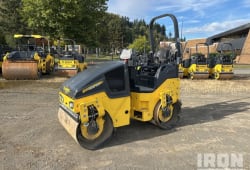Everything About Timber Frame Construction
3 Min read
)
May 28, 2024
Timber frame construction is a traditional form of building that uses large wooden beams and posts as the main structural components. This method of construction has been used for thousands of years and remains popular today, particularly in residential buildings and smaller commercial structures.Timber frame construction involves the creation of a structural skeleton from heavy timber that is jointed together with various types of joints, including pegged mortise and tenon joints. Unlike conventional framing, which uses numerous small dimensional lumber pieces, timber framing uses large, exposed woods that serve both a structural and aesthetic purpose. The frame is often left visible inside the building, providing a distinctive and rustic interior look. To know about steel frame construction, click here.
Advantage and Disadvantage of Using a Timber Frame
:format(webp)) Common Techniques in Timber Frame Construction
Common Techniques in Timber Frame Construction
1. Mortise and Tenon Joints
This ancient technique involves inserting the end of one piece of wood (the tenon) into a hole cut into another piece of wood (the mortise). Once the tenon is inserted, it is secured with wooden pegs, creating a strong and stable connection that eliminates the need for nails or metal fasteners. This method is prized for its durability and ability to withstand significant loads, making it a cornerstone of timber frame construction. The precision required in crafting mortise and tenon joints ensures a tight fit, contributing to the overall stability and longevity of the structure.
2. Dovetail Joints
Dovetail joints are characterized by their interlocking design, often used in the corners of timber frame structures where two beams meet. The shape of the dovetail joint, which resembles the tail of a dove, provides exceptional strength and resistance to pulling apart. This makes dovetail joints particularly useful in structural applications where stability and load-bearing capacity are critical. The intricate design also adds a decorative element, showcasing the craftsmanship involved in timber frame construction.
3. Scribing
Scribing is a technique used to cut timber to match the exact contours of another piece of wood or a different material, ensuring a precise and tight fit. This method is especially useful in custom or irregular timber frame designs, where standard cuts would not suffice. By carefully marking and cutting the timber, builders can create seamless connections that enhance the structural integrity and aesthetic appeal of the construction. Scribing requires a high level of skill and attention to detail, reflecting the artisanal nature of traditional timber framing.
Timber frame construction offers a unique blend of aesthetic beauty, durability, and sustainability. Its techniques, rooted in historical building traditions, continue to appeal to modern builders and homeowners alike. Timber framing not only provides structural integrity and longevity but also enhances the visual appeal of buildings with its exposed wooden beams and craftsmanship. Whether for a new home or a commercial facility, timber framing presents an excellent structural solution that is both practical and visually striking, making it a preferred choice for those who value both form and function in their construction projects.

Javier Bocanegra is Boom & Bucket's Technical Resolutions Lead, drawing on 10+ years in automotive and heavy equipment to diagnose issues, resolve complex post-sale cases, and keep machines - and customers - running smoothly. A certified heavy-equipment specialist, he's known for meticulous inspections and hands-on expertise across mechanical, electrical, and hydraulic systems. Based in Sacramento, Javier partners closely with buyers, vendors, and our field teams to deliver reliable outcomes and uphold our standards for safety and trust.










